The power and beauty of the work of peter campus (NA 2017) lies in his awareness. In 1969, campus took up video, a medium then in its nascency, to mix pithy humanism, humor, and a rigorous formalism. These works retain their power today, and he has only gotten better since. His display of what connects the mind, body, and spirit sparks the viewer in turn to be aware of her own body, self, and surroundings.
On a drizzly Friday afternoon, I traveled from Manhattan to East Patchogue, Long Island, to meet campus. The calm green surroundings seemed a world away from the city. When he asked about my trip, I mentioned seeing a man detained in handcuffs by two police officers, but noted that in the process of moving through the city, I barely registered the spectacle. I laughed, “I bet you don’t have to deal with that kind of thing in Patchogue very often,” to which he replied, “It happens here more often than you would think.”
Once you are aware, it is difficult to escape the realities of society. This sensitizing aspect of peter campus’s work is his gift to us.
Anna Boutte: When do you feel like you’ve finished a piece? Do you ever feel the work is done?
peter campus: I don’t know. That part of the process is always a little disappointing. I’m just not the type of person that sits back and says, “Wow, that’s really great. I’m so chuffed; it’s perfect.” I’m always thinking about my next piece. But there tends to be a corner of something in each work that sends me to the next, so that’s nice.
It’s probably good that you’re never fully satisfied. If you were, you might stop working.
That’s true. But it’s tough working in video. I’m sure in the late 19th century it was tough being a photographer. The art world is so slow to accept.
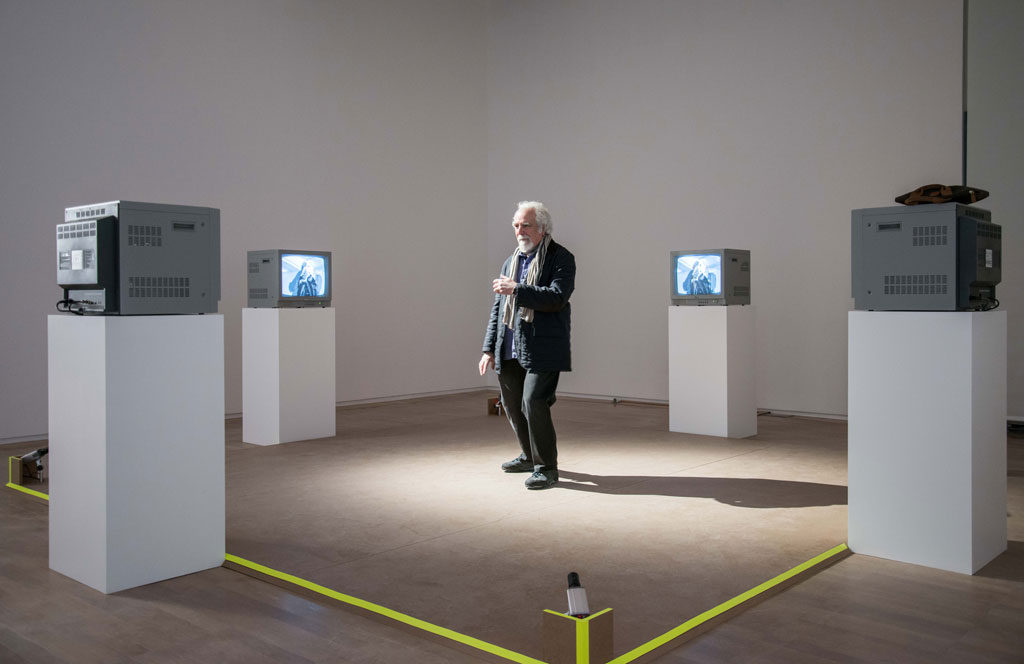
Do you think video is hard for some people to appreciate because they don’t understand it? Perhaps because they don’t know what goes into making it, it’s harder for them to value?
Even though video art is over 50 years old—Nam June Paik, for example, started making work in the late 1960s—I think it’s still too new, and people confuse it with TV. At one of my early shows, an art dealer complained, “If I wanted to watch TV, I could have done it at home.”
You give the viewer the chance to see things differently by having the video concentrated on a certain point for a long period of time. The way your work unfolds is similar to painting—the layers reveal themselves over time.
I think that’s the point that causes the strongest reaction; that people feel like they’re being controlled. I’m aware of it and do what I can to try not to make people feel that way.
Controlled in what way?
If you are watching TV or a movie, you are expected to turn your life over to the editing of the people who made it. I worked as a commercial film editor for five years—when making that type of work, you’re really trying to control people in the present, as well as in the past. If someone’s going to get killed in a movie, as a film editor, you like to give a little hint a minute or two before it happens so the audience won’t be completely shocked. I learned how to do that; I know how to entertain through editing.
But through totally abandoning these ideas, I’ve come up with what I call a videograph. By keeping a singular point of view, where all the movement is inside the frame, people can watch it for as long as they want—whether two minutes or two seconds—and walk away without feeling like they missed something.
I think about duration rather than time. For example, in a wave, I didn’t move the camera, but there is so much movement in it.
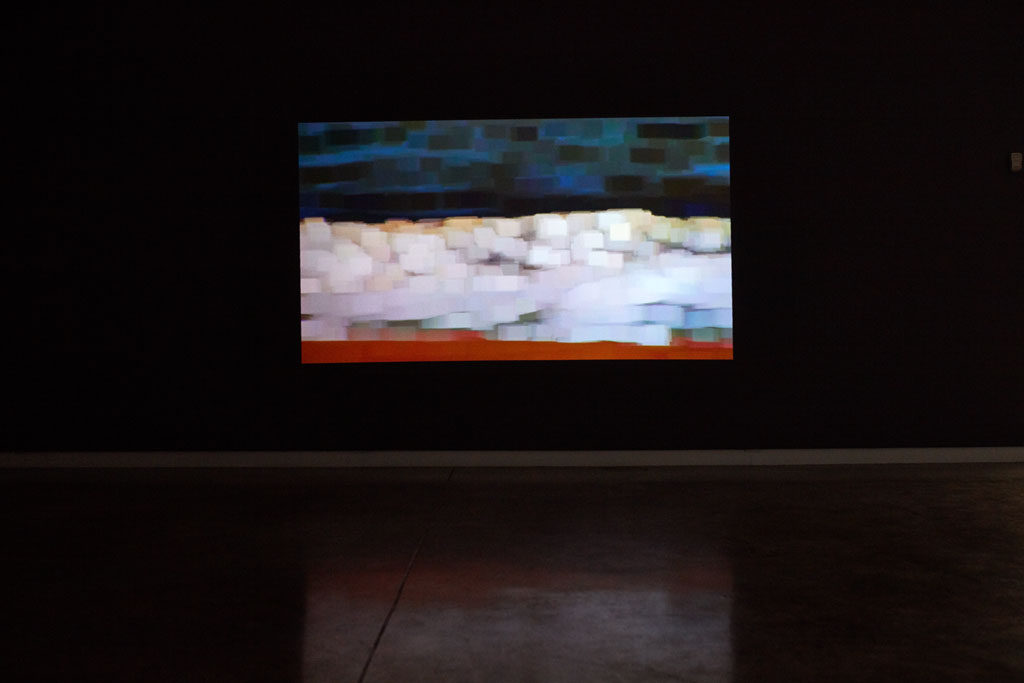
It’s a natural movement. You’re not moving it—the earth is.
That’s my religion, or one of the things I try to do: take the very ordinary thing and show its beauty. In some works, I’ve altered the color or other aspects, so you might react, “Oh, okay, I’m used to seeing that, but not in this way.”
To some people, my work is too slow. And I also feel, yes, that my work is too slow. It’s meant to make you slow down. I recently created a piece called an august day of no importance, and I think that’s the way I’m approaching my work now. It’s these moments—these Robert Frost moments—that are just so exalted and yet have no importance in them whatsoever.
We talk about “movement” in paintings all the time, but your work actually does move, so what does “movement” mean to you?
We’re all used to seeing Piet Mondrian in textbooks, but when I first went to see an actual Mondrian, I was just shocked. There was so much movement in the paint. It wasn’t a flat structure—within it, all this beautiful stuff was going on.
To me, it’s like how when you study science, you learn how everything in the world is constantly moving. This table, for example, is made of molecules that are constantly moving, so the structure is just an illusion. But it’s all processed in the brain with the reassurance, “that’s not moving; don’t worry.” Our brains constantly edit what our senses tell us. And it’s funny to try to figure out how to depict water, because if you go toward abstraction, the water seems to be moving even more. Water can look still to the naked eye, but there is so much life in it that we do not see. I’m constantly debating inside myself between showing realistic and abstract images.
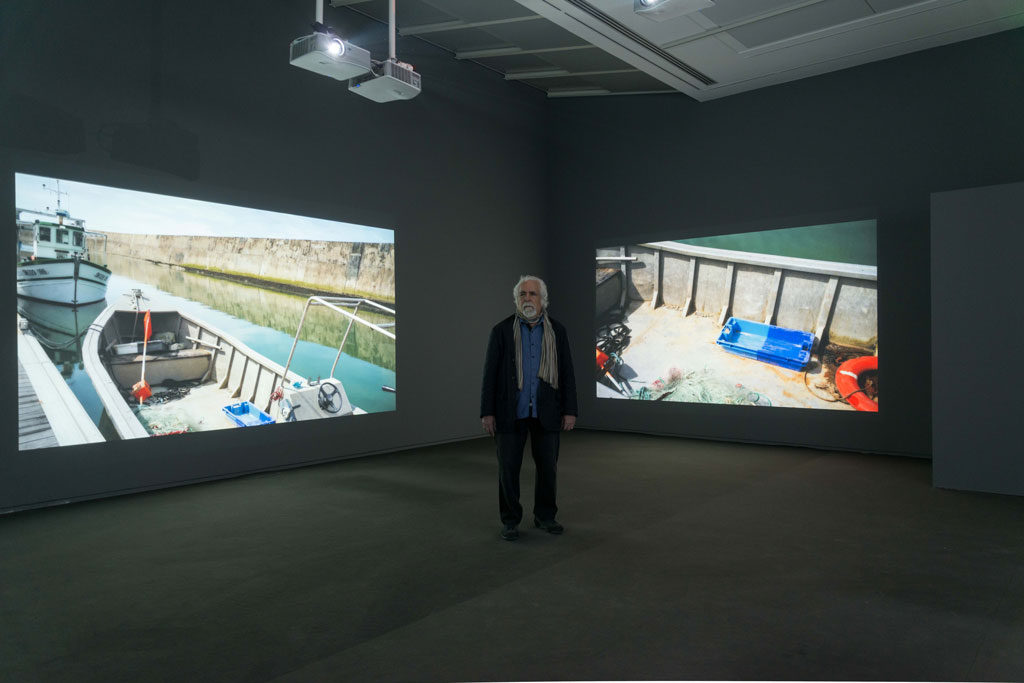
You’re working now in 4K resolution. Do you think you’ll continue, or return to a more abstract videograph style?
It’s not exactly reasoned, what I do. I might say, “well, this doesn’t work as abstract,” but what does that mean? What does it mean to have all the spaces so articulated? What does it mean to add them up into a sequence? I don’t always have an answer, so I veer back to some level of abstraction—it’s happened to me a number of times. I try not to dictate to myself, and my work is all over the place, varying through different levels of abstraction, because of that.
Still, you do work within certain parameters. For example, how do you decide how long a work or sequence will be? It isn’t just however long you feel, is it?
No, this is something that Robert Smithson brought to the art world in the late 60s—this avoiding that kind of emotional reasoning, and instead having something that turns out to be mathematical. I think that reaches a different part of the brain that is more about order, and less about the way something feels. I’ve thought to make everything the same duration—whether 30 seconds or 40 seconds—so any transition will be the same number of seconds.
How long will you normally record for a sequence? Does it vary?
For locks eddy, I went to Shinnecock Canal for a month until people there were familiar with me. They were really friendly, though, so when I asked the guy if I could photograph him, it was no problem. I don’t say “videograph” because people probably won’t know what it means. Once he agreed, I took anywhere from eight to 10 shots and then picked a few.
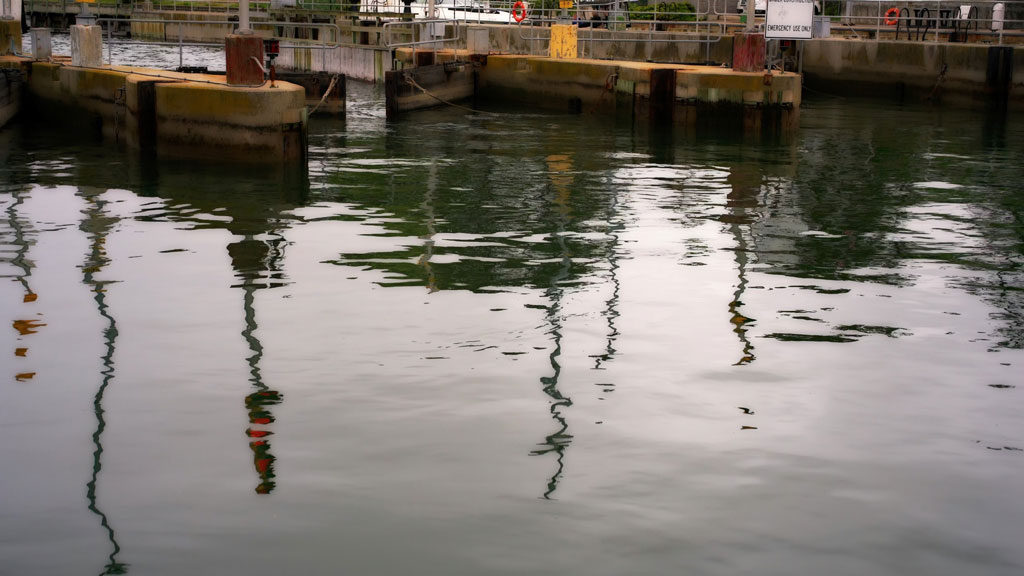
How do you edit?
I edit as I go along—not the finished work, obviously, but just to have an idea of what’s needed. In locks eddy, there was kind of a right turn because I wanted to show the depths of the water without anything else visible. It was hard, but I like how that piece turned out—it’s varied and has a nice flow. In it, I’m making a point—which I don’t think I can articulate in words because the point is contained within the piece—but it’s not just a documentary about the Shinnecock Canal. I want to say more about what it’s like to be there.
It’s nice on Long Island, but some people do crazy things. Like these people next door just chopped down their trees. I don’t understand why you’d live in the countryside and chop down all your trees. Then they planted a whole new group that will behave the way they want. When people act like this, they miss the point. Maybe it’s our culture that misses the point.
Just let the world be as it is and give up some control. Which is also the approach of your work.
Yes, I’m doing that.
You choose not to go to water as a point of leisure, but as a point of work. Is that intentional?
Yes, but in my language: I don’t like leisure boats, but I do like fishing boats. I think they are beautiful boats because everything on them has purpose.
That’s something that could be missed by a lot of viewers, because many people associate water with leisure. You’re showing a different aspect.
While I was making locks eddy, there were all these pleasure boats going through the area, but on the other side of the bay, there’s a fairly substantial fishing fleet—30 to 40 boats. That’s what drew me to that place to begin with. I had been going there for over 10 years. When you go to a place and see it in different seasons, and at different times of day, the experience produces something that has resonance. It’s like how well you get to know a work of art when you have it in your home. Whereas visiting a place once—I call that postcards. When I go to new places, it’s like making postcards.
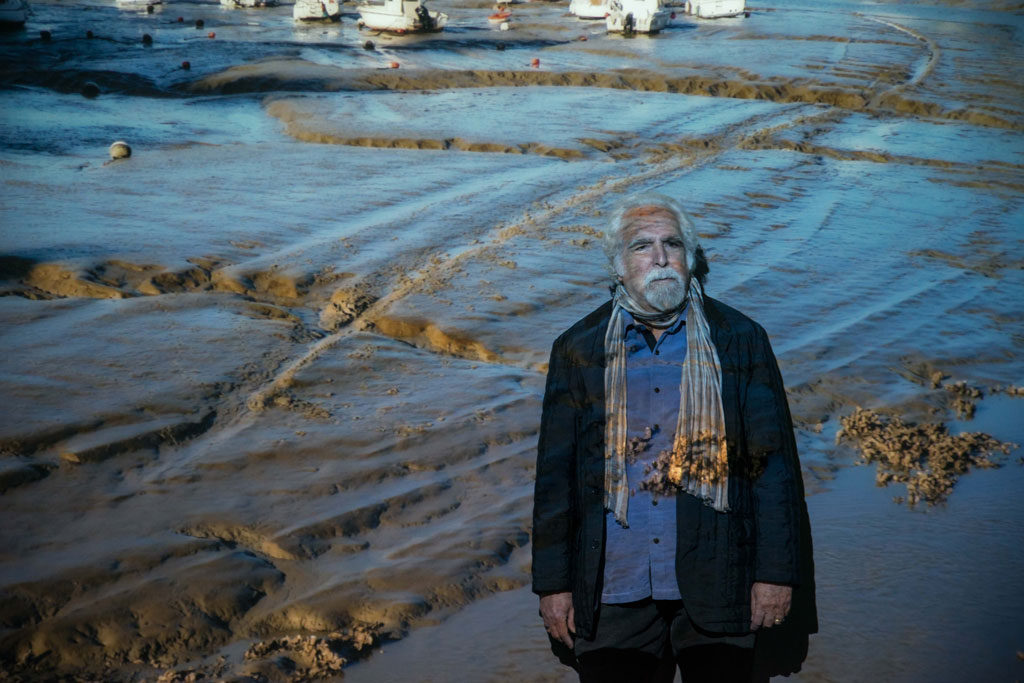
Does that mean that when you choose a location to shoot, you pick somewhere you know?
I mostly try to shoot at locations I know well, but if a certain location interests me that I am not too familiar with, then I go back and go back until I know it better.
When do you feel like you know it?
Maybe when it loses the qualities of what initially attracted me. You have to move past the idyllic first impression of a place. Sometimes I can do that quickly, but I prefer to return over and over again.
Often when I’m experiencing art, I feel I’m just skimming the surface, and it’s hard to change that feeling. Like you’re saying: you almost have to be with something every day, or for a long period, to understand it fully, or for its meaning to change. You might see something differently depending on your mindset that day.
Exactly. That’s it precisely. The way you see something can change, and that’s part of the richness of experience. You can go back to the same work over time and see the world differently.
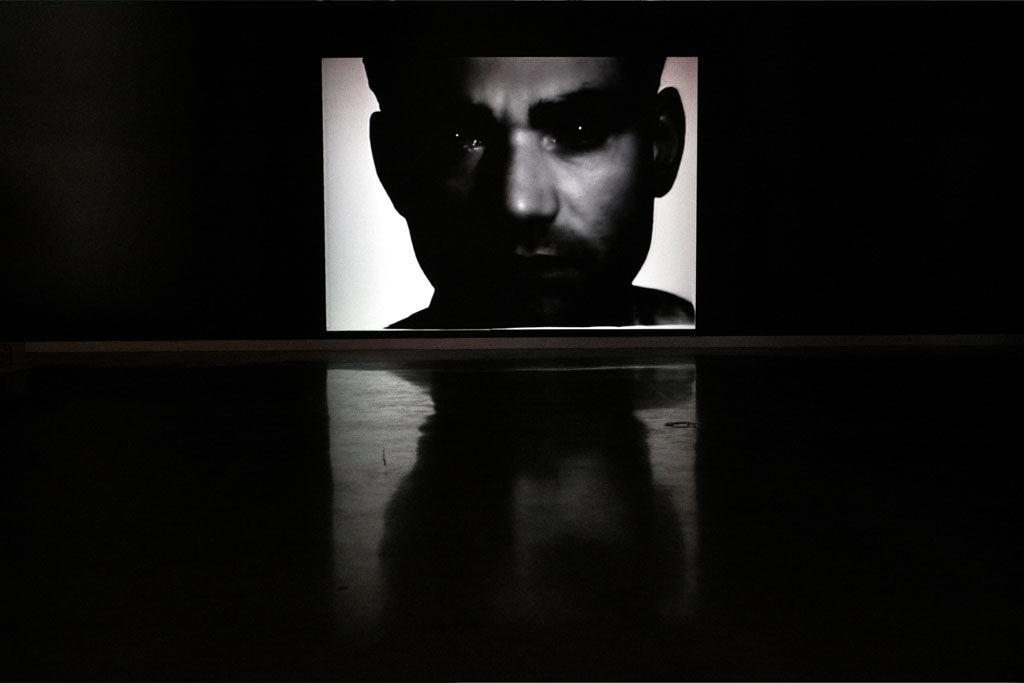
Do you think people sometimes miss this in your work?
Maybe our own interpretation is the point of the art. Do people sometimes miss the meaning of my work? Yes, but maybe I missed a different point in my own work; maybe someone else can see something that I can’t. Maybe that is the point.
Anna Boutte interned at the National Academy of Design from January through May, 2019, while studying at Christie’s Education, New York. During her time at the Academy, she worked closely with Diana Thompson, Director of Collections and Curatorial Affairs, to expand the NA Database. Anna is pleased to have had the chance to meet with peter campus to learn more about his work and experience as an artist.
